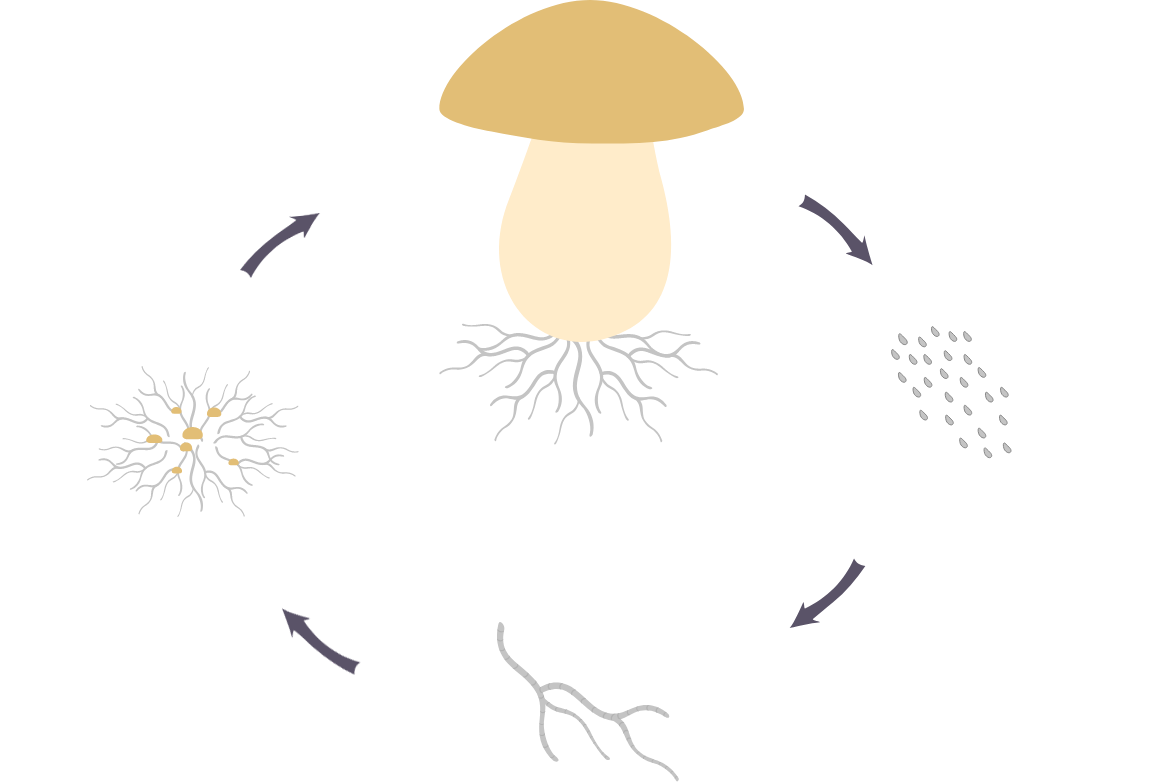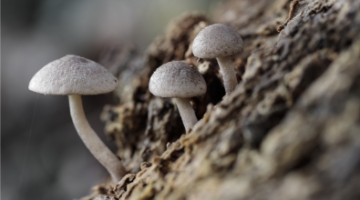
Fruitbody
This is the part of the mushroom that is most famous, and actually represents the end of the mushroom lifecycle. Here, the mushroom has decomposed all the complex nutrients in its substrate (where it was growing), and has “ran out of food.” Usually under the fruiting body, there are spores which function similar to seeds so the mushroom can reproduce and grow elsewhere where there is food – beginning the cycle all over again.
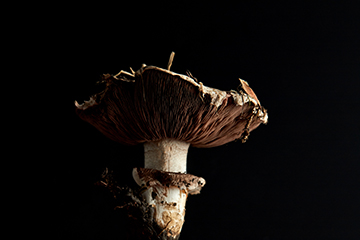
Spores
Spores are similar to plant seeds: they are responsible for traveling away from the fruiting body so they can germinate into areas with moisture and food. There, they can begin the lifecycle of a mushroom again.
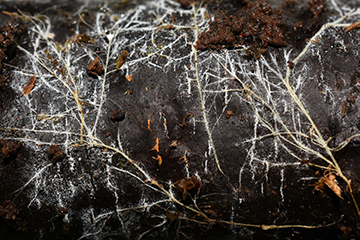
Hyphae
Similar to roots of plants, hyphae grow into the substrate as the mushroom seeks food to grow. Along the way, hyphae from other spores meet and intermingle. Their combination is what forms mycelium.
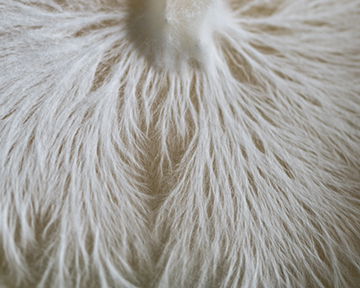
Mycelium
This is the web of roots that we can see growing in the ground or on the substrate, and represents the majority of the mushroom lifecycle. As long as there is food supply and complex molecules to be decomposed, the mycelium will keep growing and functioning. Once the food source is exhausted, the mushroom will start producing fruiting bodies.
